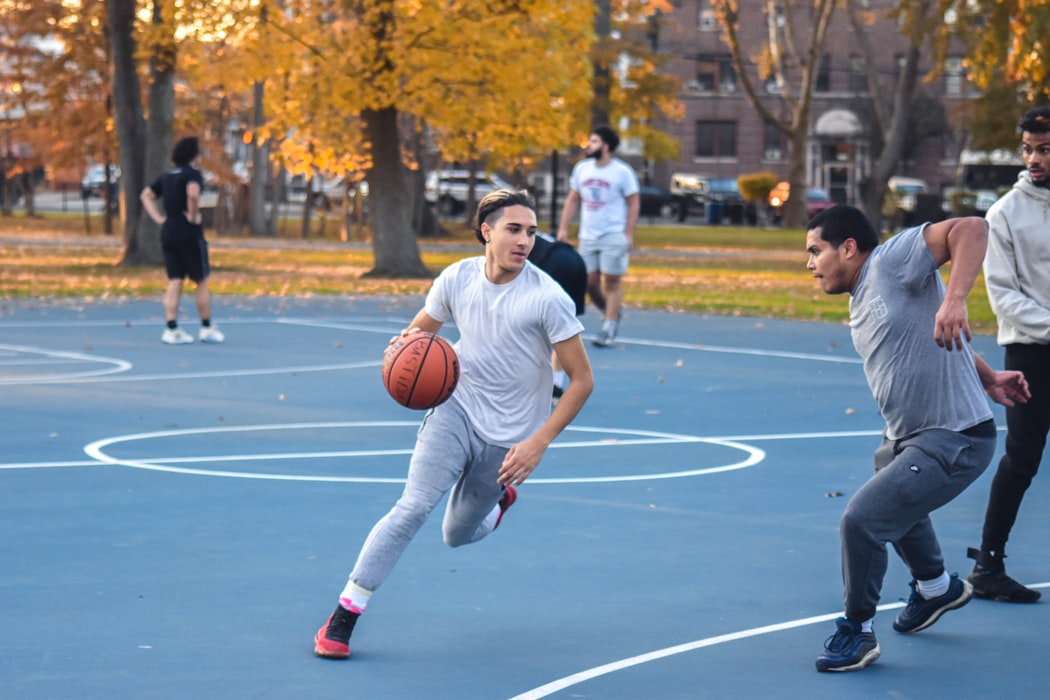Since basketball’s invention in 1891, the sport has seen massive growth from the way it originally was. Today, the speed and gameplay have all improved, making it more exciting. The drawback is that physical harm has also been more common, and if you’re playing much time on the court, chances are suffered from an ankle sprain at one time or another, sidelining you from the game.
Ankle sprains are one of the common injuries affecting basketball players. It happens when you twist, turn, roll your ankle the wrong way, causing the ligaments to stretch or tear. Fortunately, while a sprained ankle will sometimes require seeing a doctor, minor injuries can often be treated using home remedies. To help get back on the court, read below and know more about potential treatments you can do at home for a faster recovery.
R.I.C.E.
For most ankle sprains, following the R.I.C.E. protocol significantly helps the healing process. It’s an age-old remedy that doctors suggest as it works.
Rest. Stay off the injured ankle and do not walk on it, for about two days. Resting is the key to your ankle’s healing, so avoid activities that will cause pain, discomfort, or swelling. Don’t return to sports or other rigorous tasks too quickly as it will put you at risk of getting more injuries.
Ice. Applying cold to the ankle limits the swelling and aids with the pain and spasm. Ice your ankle for 15 to 30 minutes every to three hours daily. You can do an ice slush bath or ice pack for the sessions. Wrap the pack or use a cloth barrier before laying it against your ankle.
Compression. This again helps keep the swelling down by stabilizing the joint. Compress your ankle using a wrap, dressing, bandage, or sleeve. Remember to keep it snug, and not too tight as it can cause pain, numbness, and tingling.
Elevate. Keep your ankle elevated above the level of the heart. It helps in bringing down swelling as it allows blood and fluid to drain back to the heart. Thus, reducing blood pressure to the injured ligaments.
Though these steps may seem simple, using R.I.C.E. is crucial in controlling swelling. Research shows that swelling alone prolongs the healing process. The more swelling is present, the longer time it takes to heal. Begin the R.I.C.E therapy the soonest as possible to aid in regulating your body’s inflammatory response and help speed up the recovery.
OTC Pain Medication
Though an ankle sprain is often not too serious, it can be extremely painful. If the discomfort is too much to handle, using OTC pain medication is an option. Acetaminophen can relieve pain but it is better to opt for Naproxen or Ibuprofen as both work for pain and swelling. Be sure to check with your doctor, if you have other medical conditions. Of course, always adhere to the guidelines and dosage instructions for proper use.
Heat Therapy
Once the swelling goes down, you may now switch to heat therapy. Heat increases the blood circulation to the area and promotes tissue elasticity, which helps in the natural healing process. Never apply heat if there is inflammation present, as it can increase swelling. Only try heat therapy, once the swelling totally subsides, usually after 72 hours of sustaining the injury.
Stretching
After a few days, a minor sprain will most likely be healed. You may now start stretching to allow more blood flow in the area and heal the ankle faster. It will also help aid in making the ligaments flexible again, which has been restricted and recover the suppleness lost during the rest and recovery period.
You can try tracking the alphabet using your toe as it enables your ankle to move in all directions but never force the activity. Don’t move or extend your ankle if it causes pain or discomfort, as it can affect the ligaments and impede the healing process.
Walking
An ankle sprain deprives you of putting off weight on the injured ankle during the recovery period. As the inflammation goes down, allowing your ankle bear weight again will help it warm up and again, help it heal. You can begin by taking a few steps, and go for longer distances as you feel better. Gauge the weight you apply on your ankle at first. If it’s painful, you can wait for 1-2 days before trying again.
Massage
After the acute phase, you may opt for a gentle massage at home. Use essential oils and massage above or around the ankle, at the bottom of the foot or heel. Massage aids in alleviating the pain, while also encouraging blood flow to the injured area. Do this only for minor sprains, as more serious injuries, should only be handled by professional massage therapists.
Takeaway
As much as possible, you’d still want to care for your ankle. Depending on the severity, an ankle sprain may last between a few weeks to several months, which can significantly affect your game. So, always use the correct protective shoes and gears that can support your ankle and avoid slipping. Then, improve the health of your ankle joints by doing balancing and strengthening exercises. Remember, prevention is still your best ally against ankle sprains.

